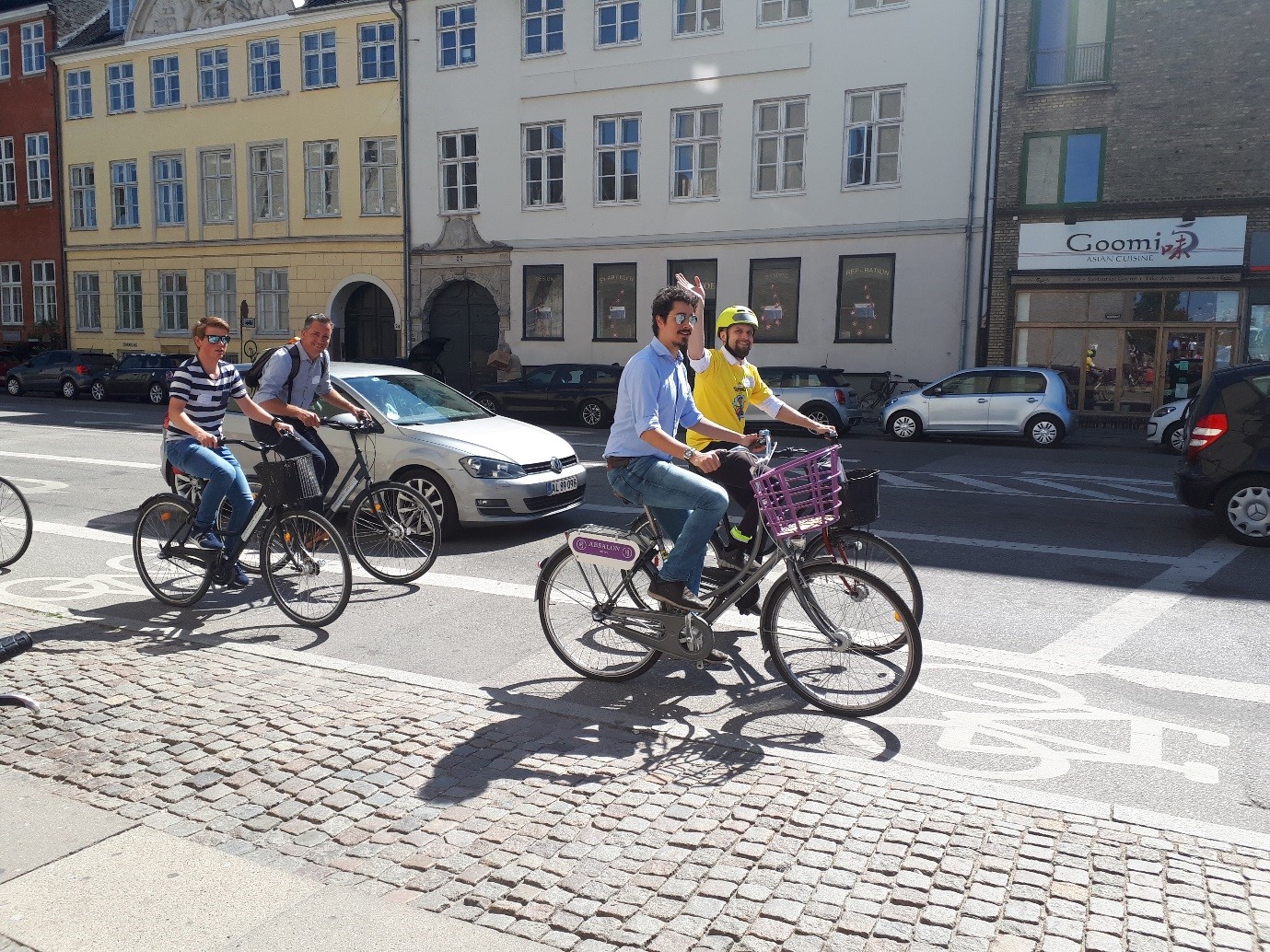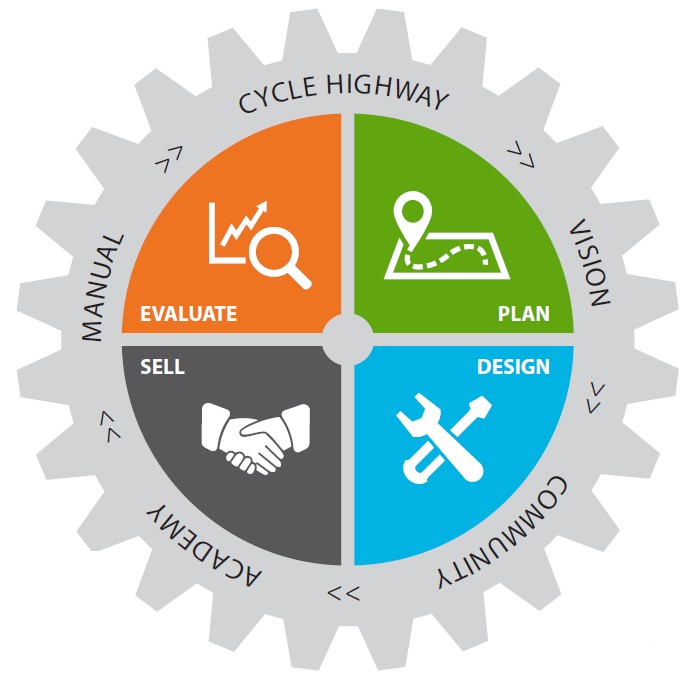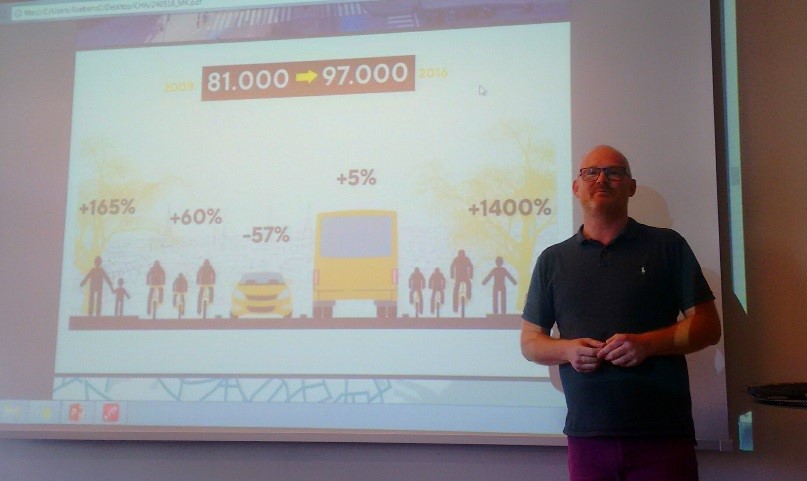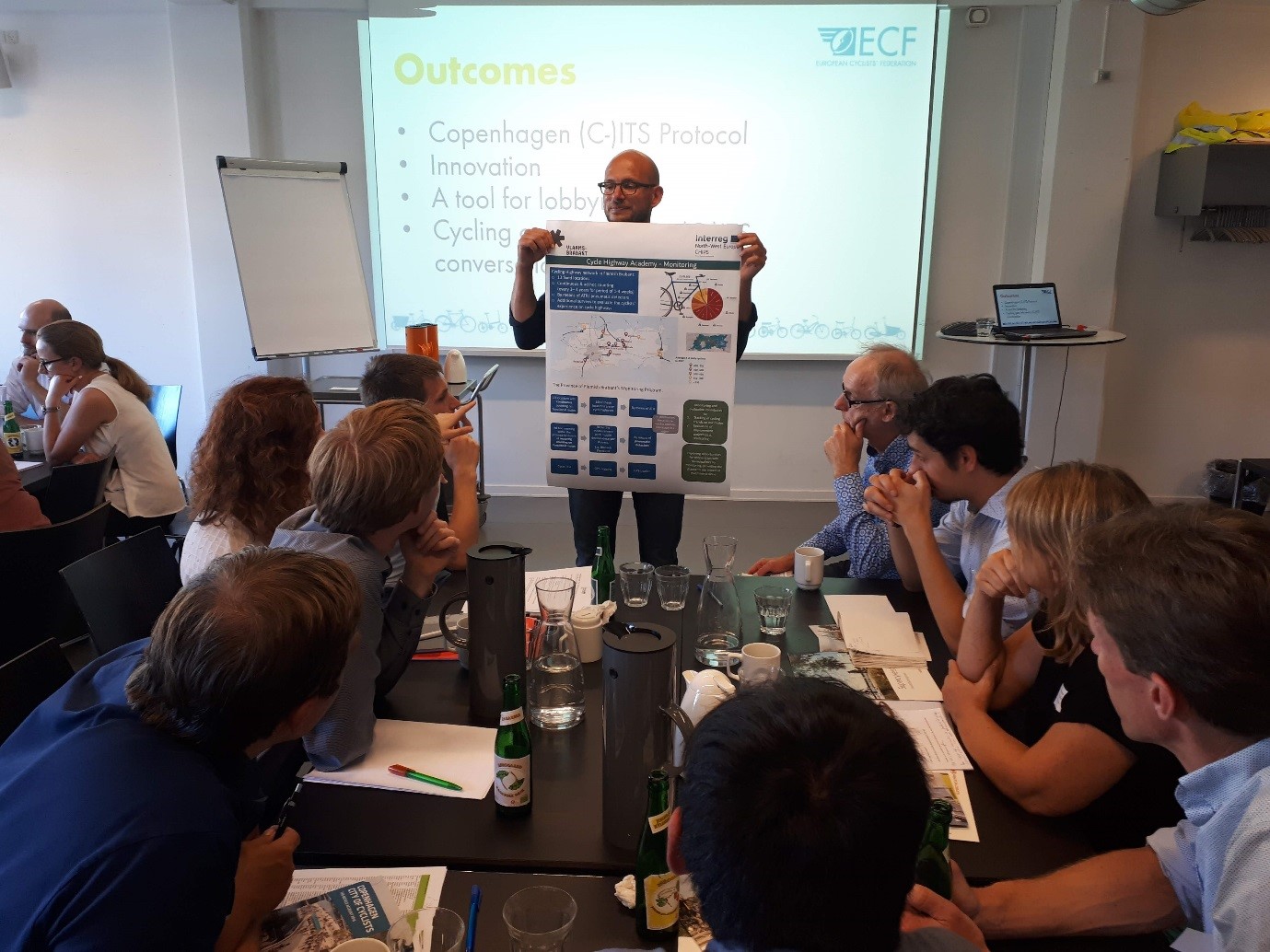
A sunny edition of the fourth Cycle Highway Academy in Copenhagen
On the 24th and 25th of May the fourth edition of the Cycle Highway Academy series was organised in the sunny city of Copenhagen, home to the widely known Cykelsuperstier network. The main topic of the fourth Cycle Highway Academy, organised by the CHIPS project, was “Monitoring and evaluating your cycle highway”. This topic also marks the final stage in our Life Cycle Highway that brings together all relevant information and tools for better planning, designing, selling and evaluating cycle highways.
 The fourth Cycle Highway Academy on “Monitoring and Evaluation” was kick-started by Morten Kabell, COO of Copenhagenize and previously Mayor of technical and environmental affairs in Copenhagen, after a short movie introducing some of the participants through images or videos of their most preferred cycle highway. Morten Kabell explained that “by reducing car lanes we reduced car traffic by 57%. But overall mobility increased by almost 20%.”
The fourth Cycle Highway Academy on “Monitoring and Evaluation” was kick-started by Morten Kabell, COO of Copenhagenize and previously Mayor of technical and environmental affairs in Copenhagen, after a short movie introducing some of the participants through images or videos of their most preferred cycle highway. Morten Kabell explained that “by reducing car lanes we reduced car traffic by 57%. But overall mobility increased by almost 20%.”
Joost de Kruijf from NHTV presented the Why and the How of monitoring by bringing urban intelligence to the next level. He demonstrated that monitoring is in fact relevant in all stages of the Life Cycle Highway and gave examples how monitoring can add value to the planning, designing, building and selling of cycle highways. He also introduced a specific monitoring case in Leiden: When the number of cyclists or cycling increases the following research question arises: How many of these are new cyclists, or are the current cyclists just riding longer distances? The availability of GPS data has the potential to answer that question, however when you lack GPS data, you can also survey cyclists about their route as it was done during the CHIPS project on the Comber greenway in Belfast.
Next on the agenda were Anna Garrett from the Office for Cycle Superhighways who presented how Supercykelstier monitors and evaluates its cycle highways and Mikkel de vries Bækgaard from the City of Copenhagen who presented the Copenhagen Bicycle Account. This project shows how Copenhagen is monitoring its bicycle investments and doing a publication on it every second year for the past 20 years. Counting cyclists revealed an increase of 61% on the far end of the cycle highway after its construction. A survey which was carried out shortly afterwards demonstrated that 25% of the new cyclists were actually former car users which provide a strong case for the case that cycle highways have the potential to reduce car use.
 Niccolo Panozzo from the European Cyclists’ Federation presented the project idea “Hacking Copenhagen” about digitalising (life in) the city of Copenhagen by using bicycles. The ultimate of this project idea is to bring cycling into the ITS Platform.
Niccolo Panozzo from the European Cyclists’ Federation presented the project idea “Hacking Copenhagen” about digitalising (life in) the city of Copenhagen by using bicycles. The ultimate of this project idea is to bring cycling into the ITS Platform.
To close of the first day of the Cycle Highway Academy a round table workshop was organised in which the 5 CHIPS regions presented their current state of the art with regard to monitoring. At the end of the session each group presented its most important learning point of the day:
- Importance to gather high quality data in order to influence decision makers
- Sharing Knowledge leads to combined strengths.
- Strengths and weaknesses of high tech data gathering vs. low tech (manual) data gathering.
- Importance of data gathering for modelling.
- A valid assumption requires high quality data.
At the end of the day a Networking Dinner was offered to all Cycle Highway Academy Participants that provided a nice, informal setting for everyone to continue to meet all the participants and to share experiences and knowledge with regard to cycle highways.
 The second day of the Cycle Highway Academy was introduced by a very passionate and inspiring Åse Boss, who is the current manager of all traffic counting in Copenhagen. Åse provided insight to how Copenhagen monitors its bicycle traffic, how it changes during the day and year and what happens when new bicycle bridges open.
The second day of the Cycle Highway Academy was introduced by a very passionate and inspiring Åse Boss, who is the current manager of all traffic counting in Copenhagen. Åse provided insight to how Copenhagen monitors its bicycle traffic, how it changes during the day and year and what happens when new bicycle bridges open.
Next on the agenda was Stijn Goossens from Signco who presented a technical overview of Industrial Counters that can be used for counting cyclists and who gave the participants some useful insights on what to pay attention to when choosing the right device to count cyclists in their region.
Finally Sidsel Birk Hjuler, the Head of Office of Supercykelstier, introduced the cycling excursion around a few of Copenhagen’s cycle highways by sharing the history behind the creation of the cycle highway network in and around Copenhagen and what is so “Super” about this cycle highways. After an inspiring cycle highway excursion we could not help but agree: there is a lot of “Super” about the cycle highways in Copenhagen.
Regions:
Network/Project Involved:
Contact the author
Recent news!
Upcoming events
Contact Us
Avenue des Arts, 7-8
Postal address: Rue de la Charité, 22
1210 Brussels, Belgium









